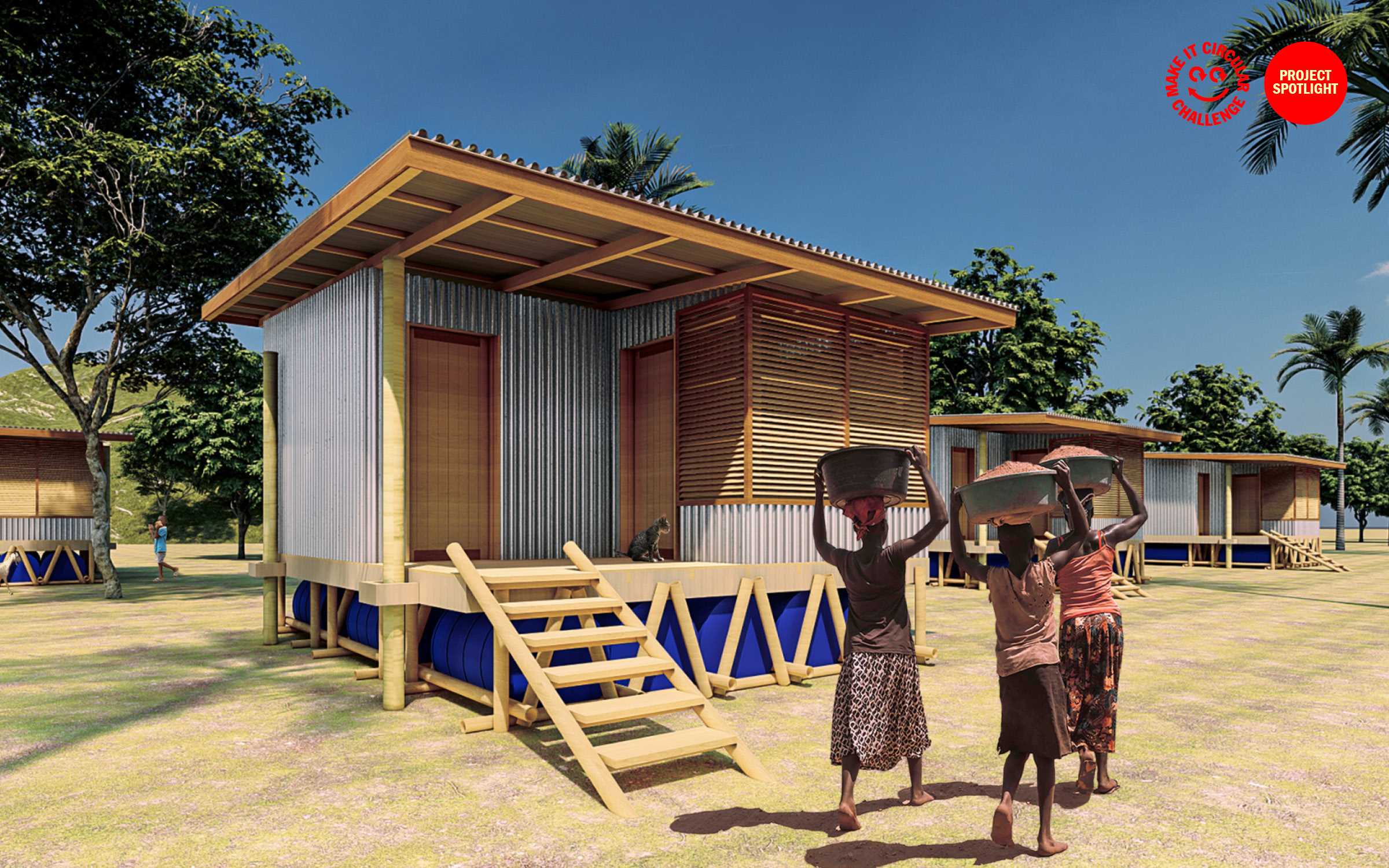Signed, sealed and delivered! As of today, the Make it Circular Challenge is officially closed for applications. Over 650 projects by creative entrepreneurs in more than 50 countries will now move on to the next round of the competition, which was launched by What Design Can Do in partnership with the IKEA Foundation. Among the projects we received are circular materials, products, systems and services that prevent waste by rethinking the way we build, eat, wear, package and buy. Over the next few weeks, a selection committee will review all entries and come up with a shortlist of the most promising solutions, to be announced on 30 March 2023.
The Make it Circular Challenge was launched in October last year as part of a wider effort to explore design’s relationship with consumerism and climate change. With the help of experts in circular economy and design, we put together a brief which asked innovators to share proposals for a radically different future: one that’s restorative and regenerative by design. Over the next three months, the creative community delivered a brilliant response. “The quality and diversity of ideas we’ve seen is very high,” says Richard van der Laken, co-founder and creative director of What Design Can Do. “We now have a roadmap for changing the way we design, make and use things, and for actually making our lives better in the process. The shift has already begun, but it’s time we put everything we have into making these ideas as real, tangible and accessible to as many people as possible.”
CLOSING LOOPS AND CREATING NEW ONES
Many of this year’s entries showcase strategies for building a circular economy, like designing out waste and pollution, using fewer materials for longer, and feeding resources back into the system. Some of the most remarkable are those that find value in very unexpected places — for example by developing unconventional materials out of overlooked materials or waste streams (like human hair, urine, orange peels or eggshells). Others go against the grain by focusing on small but scalable interventions (like slip-on soles for sneakerheads, color-coded components for electronics, or this simple technique to rescue defective tiles).


Top: Material made from orange peels by Krill. Bottom: Eggshell bricks by Manufactura.
There are also a large number of projects that focus less on delivering new products and technologies, and more on helping people explore circular ways of living and relating to each other. These often have a strong social component, and highlight the need for a transition that’s fair, inclusive — and even joyful. Projects like Land Fabric, Hereco and Rethread Africa, for example, are aimed at reviving traditional practices and improving the livelihoods of local artisans and farmers. Others like Skateistan in a Box, Regenerating Brazil’s Farms and Suubi Flood-Resilient Homes further show how circular innovations can support the wellbeing and happiness of our communities.


Top: Working with agave fibres, Fibra. Bottom: Modular skate park by Skateistan.
Related to these are projects that speak to the changing role of the designer: from creators of images and objects to disruptors and facilitators who bridge the gaps between processes, systems and industries. Many are services that make it easier for producers to connect different ends of their supply chains, or for consumers to revalue, refill or repair the things they already have. Examples include reusable packaging services like Zero Impack and Refillable India, peer-to-peer upcycling networks like Cyclothe and Africa Collect Textiles, and platforms like The Guilder and Tag-Share, which allow consumers to reshare, resell and repair their goods. In these entries we see how circular design is being used to close existing loops, while slowly creating new ones and exploring different ways to think about concepts like ownership, novelty and abundance.


Top: Reusable containers by Zero Impack. Bottom: Tagshare app.
WHAT’S NEXT?
During the next phase of the competition, several dozen creative and industry leaders from various sectors will join the Make it Circular Challenge selection committee. Represented in this group are experts in circular design, climate action and social impact, all of them hand-picked for the unique perspectives and experiences they bring to the table. This year’s cohort includes Mayya Saliba (Circle Economy), Dr. Leyla Açaroglu (Disrupt Design), Adebayo Oke-Lawal (Orange Culture), Finn Harries (Earthrise) and Joe Iles (Ellen MacArthur Foundation). Their task? To review every entry and collaborate on a shortlist of 50 most promising projects.
Besides rating each project against the five main selection criteria (impact, creativity, feasibility, scalability and teamwork), each member will also provide feedback on how nominees could improve or refine their projects. On 30 March, we’ll announce the nominees, and a fresh group of jury members will begin another intensive selection process to decide on 13 winners worldwide. Each winning team will receive a prize fund of €10.000 to invest into their ideas or start-ups. They will also gain access to a six-month-long development programme co-created by Impact Hub Amsterdam, and valuable press and publicity through the WDCD network.
All (public) entries are now available for viewing on the Make it Circular Challenge project gallery.
